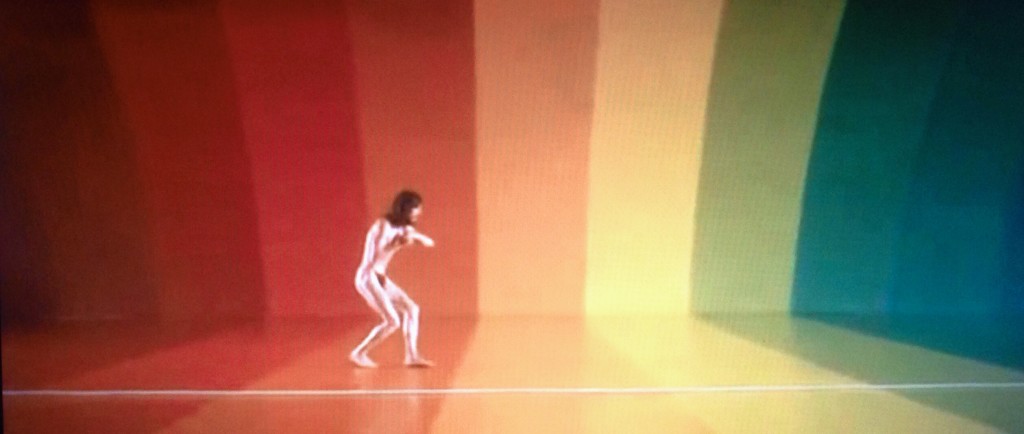Brandi Katherine Herrera
Natürlicher / vis-à-vis land, animal


Last December, I packed up everything I owned and put it into storage.
Then I packed what little I needed for the next six months into one small bag and one small pack and then I got on a plane and set out for something else.
Portland, Ore. to the American Midwest, en route to France.
With me, I brought some of the primary building blocks to make a new book: Translation essays. Translated poems. Goethe’s Zur Farbenlehre (Theory of Colors), in the original German. A German dictionary. A handful of color swatches.
A camera. A pen. A paintbrush.
Every thing I encountered while traveling, I defined through my own particular lens.
Colored with my affinities for a people, a landscape.
Almondine. Himmel. Shark fin. Angel food.
(omaha) / 793
Partly “actu,” partly “potentia”—it contains all other colors.

Reading and translating Goethe’s German text through a slow, iterative process of erasure, dissection, assemblage.
Reworking words, colors, into something other. Then putting them back together again.
All while attempting to preserve Goethe’s original theories and intentions regarding the nature of color, and our human capacity for color perception.
(confiture) / 775
It’s no wonder that the energetic, robust, and crude find this color so particularly pleasing.

Uncovering this language of colors and their assigned significance, has been my primary task.
Blue, blau, bleu. Gelb-something. Red.
A project that began in winter, now finds its first ending in the lighter months.
Colza. Himmel. Confiture. Chakra.
(angel food) / 796
It simultaneously conveys an impression of both seriousness and grandeur, but also mercy and grace.

The Argentine writer Borges famously told his translator to write not what he said, but what he wanted to say.
Quiero decir.
Ich möchte sagen.
What do I want to say?
What did Goethe?
Summer is almost here. And there are colors for that, too.
(maille) / 776
It produces an unbelievable kind of shock to the system, and retains this effect even when it’s darkened.

Sixteen colors—sourced from the landscapes and built environments I’ve inhabited since I left home—make up the first section of my book.
Mutterfarbe.
A term that Goethe liked to use when he talked about the origins of color.
A term that I like also because of what it points to—the beginnings of something, the birth.
(printemps) / 771
Through a slight, almost imperceptible motion, the beautiful impression of fire and gold is transformed to be perceived as filth.

And the language? Goethe.
Taken from a section of his text about the “sensual and moral effects” that colors aught to have on us. Then translated from German into English for the first time since Charles Eastlake did, in 1840.
I took whatever I wanted from his words, but not from anywhere else—like a painter dipping her paintbrush into a daub of paint on her palette.
Using only what colors were available. Then I painted something new with it.
How does color make us feel? In other words.
What does a pink or a yellow say about me or you or him, that a green doesn’t?
(haute normandie) / 802
One doesn't want to (and cannot) try to imagine something beyond it.

Ich möchte sagen.
Quiero decir.
What did Goethe want to say about color in 1810?
What would he want to say today?
Right now?
(milk bath) / 779
In its appearance, then, it is somewhat of a contradiction of stimulation and tranquility.

And so, the language of the resulting poems and erasures is no longer my own language.
Nor is it Goethe’s.
But a hybrid where both of our ideas and points of view reside together in a strange, new, world.
(crown chakra) / 791
The high clergy have appropriated this unquiet color for themselves.

What do I want to say?
What did Goethe?
(shark fin) / 780
Not because it penetrates, but because it draws us in.

What I want to say, is shade tree.
Erdbeere.
Picnic blanket.
Pith.
(himmel) / 783
In reality, empty and cold.
Brandi Katherine Herrera
Brandi Katherine Herrera is a Portland, Ore. based poet and multidisciplinary artist, whose work in poetic text, film, and sound has been performed for Poetry Press Week, Pure Surface, Free Verse, and AiPD INK, and featured in The Volta, Octopus Magazine, The Common, Word/For Word, Borderlands Texas Poetry Review, VoiceCatcher, Poems, Places & Soundscapes, and The Oregonian, among others. She is the co-editor of The Lake Rises, a WITNESS POST Series anthology (Stockport Flats, 2013), and holds a Master of Fine Arts in Poetry from Pacific University. She spent the first half of 2015 as an artist-in-residence at Château de Monthelon (Montréal, France), where she completed a book of experimental text + visual translations and poems (Mutterfarbe) using Goethe’s Zur Farbenlehre as a primary source.